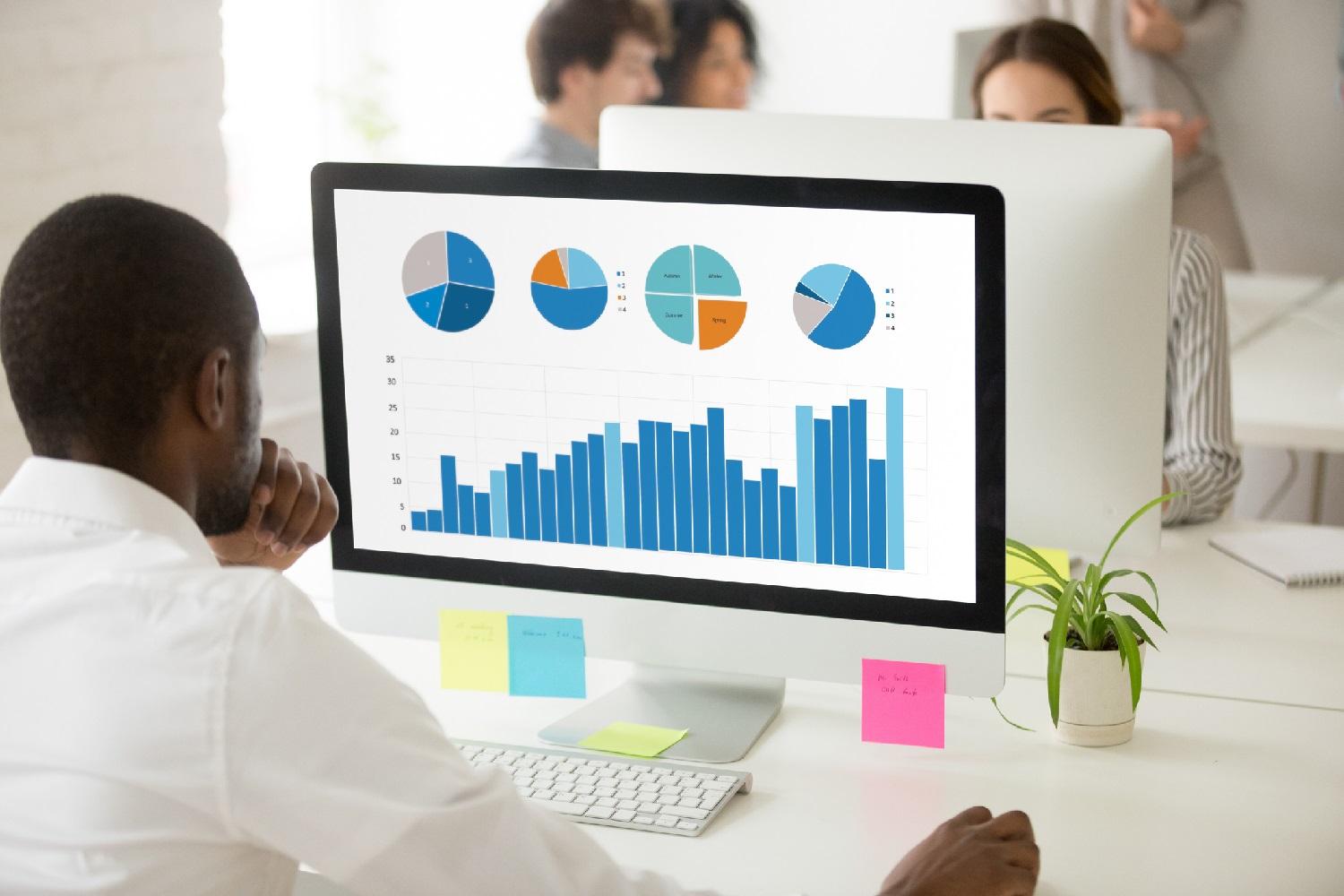Business News Daily provides resources, advice and product reviews to drive business growth. Our mission is to equip business owners with the knowledge and confidence to make informed decisions. As part of that, we recommend products and services for their success.
We collaborate with business-to-business vendors, connecting them with potential buyers. In some cases, we earn commissions when sales are made through our referrals. These financial relationships support our content but do not dictate our recommendations. Our editorial team independently evaluates products based on thousands of hours of research. We are committed to providing trustworthy advice for businesses. Learn more about our full process and see who our partners are here.
How Artificial Intelligence Will Transform Businesses
AI's vast capabilities are already transforming business and changing the nature of many jobs.

Table of Contents
Many people still associate artificial intelligence (AI) with science-fiction dystopias, but that characterization is waning as the technology develops and becomes more commonplace in our daily lives. Today, AI is a household name — and sometimes even a household presence. Perhaps more importantly, it’s becoming an increasingly crucial business tool with ramifications across multiple industries.
We’ll explain more about AI, how it impacts business and why adopting AI technologies is imperative to maintain a competitive edge.
What is AI?
AI is a broad term that refers to computer software that engages in humanlike activities, including learning, planning and problem-solving. Calling specific applications “artificial intelligence” is like calling a car a “vehicle.” It’s technically correct, but it doesn’t cover the specifics.
AI’s most prevalent business use cases involve machine learning (ML) and deep learning.
ML
ML is one of the most common types of AI being developed for business purposes. It is primarily used to process large amounts of data quickly. ML-based AI includes algorithms that appear to “learn” over time. In other words, if you feed an ML algorithm more data, its modeling should improve.
ML can put vast troves of data — increasingly captured by connected devices and the Internet of Things (IoT) — into a digestible context for humans.
ML example:
If you manage a manufacturing plant, your machinery is likely hooked up to a network. Connected devices feed a constant stream of data about functionality, production and more to a central location. Unfortunately, it’s too much data for a human to sift through — and even if they could, they would likely miss most of the patterns.
In contrast, ML can rapidly analyze the data as it comes in, identifying patterns and anomalies. If a machine in the manufacturing plant works at a reduced capacity, an ML algorithm can catch the problem and notify decision-makers that it’s time to dispatch a preventive maintenance team.
Deep learning
Deep learning is an even more specific version of ML that relies on neural networks to engage in nonlinear reasoning. It is critical to perform more advanced functions, such as fraud detection, because it can simultaneously analyze a wide range of factors.
Deep learning has excellent promise in business. While older ML algorithms can plateau after capt uring a specific amount of data, deep-learning models continue improving performance as more data is received. They are far more scalable, detailed and independent.
Deep learning example:
For self-driving cars to work, several factors must be identified, analyzed and responded to simultaneously. Deep learning algorithms help self-driving cars contextualize information picked up by their sensors, such as the distance of other objects, the speed at which they are moving and a prediction of where they will be in five to 10 seconds. All this information is calculated at once to help a self-driving car make decisions like when to change lanes.
How AI is transforming business
AI isn’t a replacement for human intelligence and ingenuity — it’s a supporting tool. While the technology may not be able to complete commonsense tasks in the real world, it is adept at processing and analyzing troves of data much faster than a human brain. AI software can take data and present synthesized courses of action to human users, helping us determine potential consequences and streamline business decision-making.
“Artificial intelligence is kind of the second coming of software,” explained Amir Husain, founder of ML company SparkCognition. “It’s a form of software that makes decisions on its own, that’s able to act even in situations not foreseen by the programmers. Artificial intelligence has a wider latitude of decision-making ability [than] traditional software.”
AI’s abilities make the technology a valuable business tool, particularly in the following areas:
- ML
- Cybersecurity
- Customer relationship management (CRM)
- Internet and data research
- Digital personal assistants
ML
In business, ML is often used in systems that capture vast amounts of data. For example, smart energy management systems collect data from sensors affixed to various assets. The troves of data are then contextualized by ML algorithms and delivered to your company’s decision-makers to understand energy usage and maintenance demands better.
Cybersecurity
AI is an indispensable ally in preventing and avoiding network security threats. AI systems can recognize cyberattacks and cybersecurity threats by monitoring data input patterns. After detecting a threat, it can backtrack through your data to find the source and help prevent future threats. AI is an extra set of diligent, constantly seeking eyes that can significantly bolster your infrastructure.
“You really can’t have enough cybersecurity experts to look at these problems because of scale and increasing complexity,” Husain noted. “Artificial intelligence is playing an increasing role here as well.”
CRM
AI is also changing CRM systems. Typically, CRM software requires significant human intervention to remain current and accurate. However, today’s best CRM software uses AI to transform into self-updating, auto-correcting systems that do much of the background work of managing customer relationships. For example, Hubspot CRM offers AI tools to help draft emails or social media copy and analyze customer profiles and data to support your team.
A great example of using AI in CRM can be found in the financial sector. Dr. Hossein Rahnama, founder and CEO of AI concierge company Flybits and visiting professor at the Massachusetts Institute of Technology, worked with TD Bank to integrate AI with regular banking operations.
“Using this technology, if you have a mortgage with the bank and it’s up for renewal in 90 days or less … if you’re walking by a branch, you get a personalized message inviting you to go to the branch and renew [your] purchase,” Rahnama explained. “If you’re looking at a property for sale and you spend more than 10 minutes there, it will send you a possible mortgage offer.
Internet and data research
AI is also significantly impacting online data research. It can sift through vast data troves to identify search behavior patterns and provide users with more relevant information. As people use their devices more and AI technology becomes even more advanced, users will have even more customizable experiences. These abilities will help small businesses reach their target customers more efficiently.
“We’re no longer expecting the user to constantly be on a search box Googling what they need,” Rahnama noted. “The paradigm is shifting as to how the right information finds the right user at the right time.”
Digital personal assistants
AI can transform internal business operations through AI chatbots that act as personal assistants, helping to manage emails, maintain calendars and provide recommendations for streamlining processes. Additionally, chatbots can help you grow your business by handling customer inquiries online.
By offloading various tasks to chatbots, you improve customer service while gaining extra time to focus on strategies to grow your business.
The future of AI
The future of AI is potentially limitless. Consider the following paths forward for the technology:
- AI will handle more everyday tasks: Experts see AI technology continuing to develop to handle more “commonsense” tasks. That means robots will become extremely useful in everyday life.
- AI will make the impossible possible: “AI is starting to make what was once considered impossible possible, like driverless cars,” explained Russell Glenister, CEO and founder of Curation Zone. “Driverless cars are only a reality because of access to training data and fast GPUs [graphics processing units], which are both key enablers. To train driverless cars, an enormous amount of accurate data is required and speed is key to undertake the training. Five years ago, the processors were too slow, but the introduction of GPUs made it all possible.”
- AI will revolutionize familiar activities. Dr. Nathan Wilson, co-founder and chief technology officer of Nara Logics, says AI is on the cusp of revolutionizing familiar activities like dining. Wilson predicted that AI could be used by a restaurant to decide which music to play based on the interests of the guests in attendance. AI could even alter the appearance of the wallpaper based on what the technology anticipates the crowd’s aesthetic preferences might be.
- AI will pave the way for 3D experiences. Rahnama predicts that AI will transform digital technology from the familiar two-dimensional, screen-imprisoned form. “We’ve always relied on a two-dimensional display to play a game or interact with a web page or read an e-book,” Rahnama explained. “What’s going to happen now with artificial intelligence and a combination of [the Internet of Things] is that the display won’t be the main interface ― the environment will be. You’ll see people designing experiences around them, whether it’s in connected buildings or connected boardrooms. These will be 3D experiences you can actually feel.”
What does AI mean for workers?
As AI transforms industries, many fear technology and workplace automation will force humans out of work. The jury is still out: Some experts vehemently deny that AI will automate so many jobs that millions of people will be unemployed while others see it as a pressing problem.
While there is still some debate on how the rise of AI will change the workforce, experts agree there are some trends we can expect to see.
AI may affect analyst jobs.
Rahnama doesn’t foresee wide-ranging lost jobs. “The structure of the workforce is changing, but I don’t think artificial intelligence is essentially replacing jobs,” Rahnama explained. “It allows us to really create a knowledge-based economy and leverage that to create better automation for a better form of life.”
However, Rahnama does see potential repercussions for analyst-related jobs. “It might be a little bit theoretical, but I think if you have to worry about artificial intelligence and robots replacing our jobs, it’s probably algorithms replacing white-collar jobs, such as business analysts, hedge fund managers and lawyers.”
AI may create more jobs.
Some experts believe that integrating AI into the workforce will create more jobs — at least in the short term.
Wilson says the shift toward AI-based systems will likely cause the economy to add jobs facilitating the transition. “Artificial intelligence will create more wealth than it destroys,” Wilson predicted, “but it will not be equitably distributed, especially at first. The changes will be subliminally felt and not overt. A tax accountant won’t one day receive a pink slip and meet the robot that is now going to sit at [their] desk. Rather, the next time the tax accountant applies for a job, it will be a bit harder to find one.”
Wilson also anticipates that AI in the workplace will fragment long-standing workflows, creating many human jobs to integrate those workflows.
AI-created jobs may dwindle eventually.
If AI does affect employment, this transition will take years — if not decades — across different workforce sectors. Still, experts like Husain are worried that once AI becomes ubiquitous, any jobs the technology creates (and existing ones) may start to dwindle.
Husain wonders where those workers will go in the long term. “In the past, there were opportunities to move from farming to manufacturing to services. Now, that’s not the case. Why? Industry has been completely robotized and we see that automation makes more sense economically.”
Husain pointed to self-driving trucks and AI concierges like Siri and Cortana as examples. He said that as these technologies improve, widespread use could eliminate as many as 8 million jobs in the United States alone.
“When all these jobs start going away, we need to ask, ‘What is it that makes us productive? What does productivity mean?'” Husain said. “Now, we’re confronting the changing reality and questioning society’s underlying assumptions. We must really think about this and decide what makes us productive and what is the value of people in society. We need to have this debate and have it quickly because the technology won’t wait for us.”
AI may require a shift to more specialized skills.
As AI becomes a more integrated part of the workforce, it’s unlikely that all human jobs will disappear. Instead, many experts have begun to predict that the workforce will become more specialized. These roles will require skills that workplace automation can’t (yet) provide, such as creativity, problem-solving and qualitative skills.
AI is the future
Whether rosy or rocky, the future is coming quickly and AI will undoubtedly be a part of it. As this technology develops, the world will see new startups, numerous business applications and consumer uses, displacing some jobs and creating entirely new ones. Along with the IOT, AI has the potential to dramatically remake the economy, but its exact impact remains to be seen.
Neil Cumins contributed to this article. Source interviews were conducted for a previous version of this article.
















